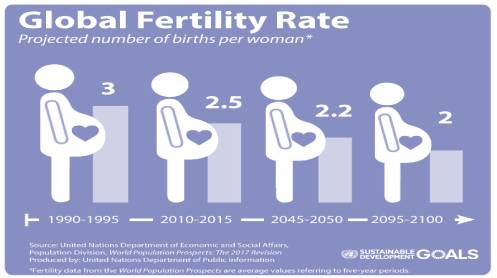ISLAMABAD: Pakistan’s fertility rate has dropped from six live births per woman in 1994 to 3.6 in 2024, according to the UN’s World Fertility Report 2024.
The advance unedited report highlights the benefits of reducing adolescent birth rates, which can accelerate fertility declines and yield significant socioeconomic gains. Lower birth rates would enable better resource allocation for child and adolescent health, while delaying early pregnancies could open opportunities for education and employment for young women.
The report states that 1.8 billion people, or 22% of the global population, currently live in 63 countries undergoing demographic transition, with fertility rates projected to decline further after 2054. It urges governments to enforce laws protecting women’s rights, ban child marriages, and ensure access to reproductive health care and education.
Globally, fertility rates have steadily declined over the past 50 years, dropping from 4.8 births per woman in 1970 to 2.2 in 2024. Women today have, on average, one fewer child than in 1990, when the global fertility rate stood at 3.3. The report emphasizes that managing population growth is crucial for countries facing economic, social, and environmental challenges to ensure a sustainable future.







